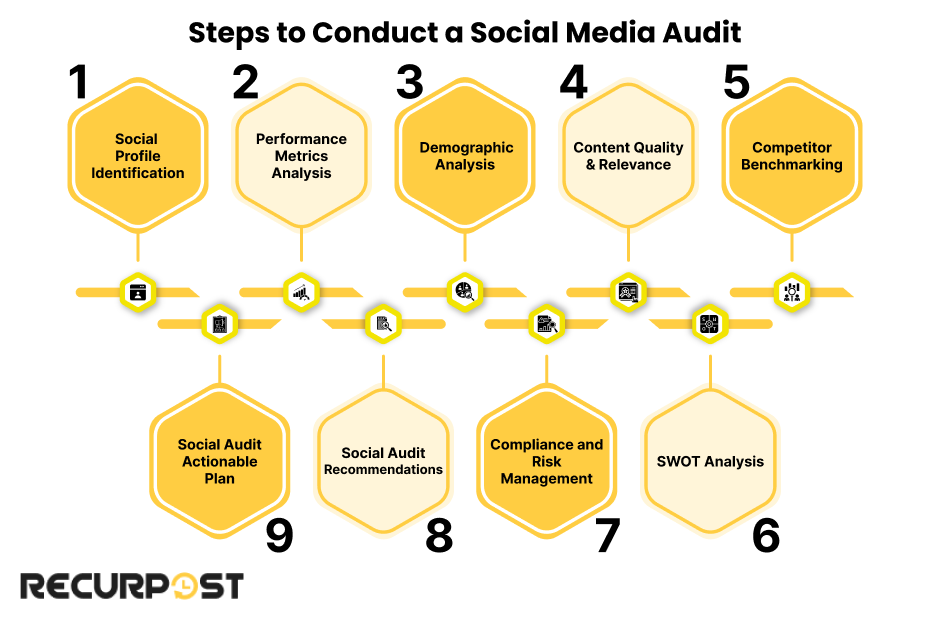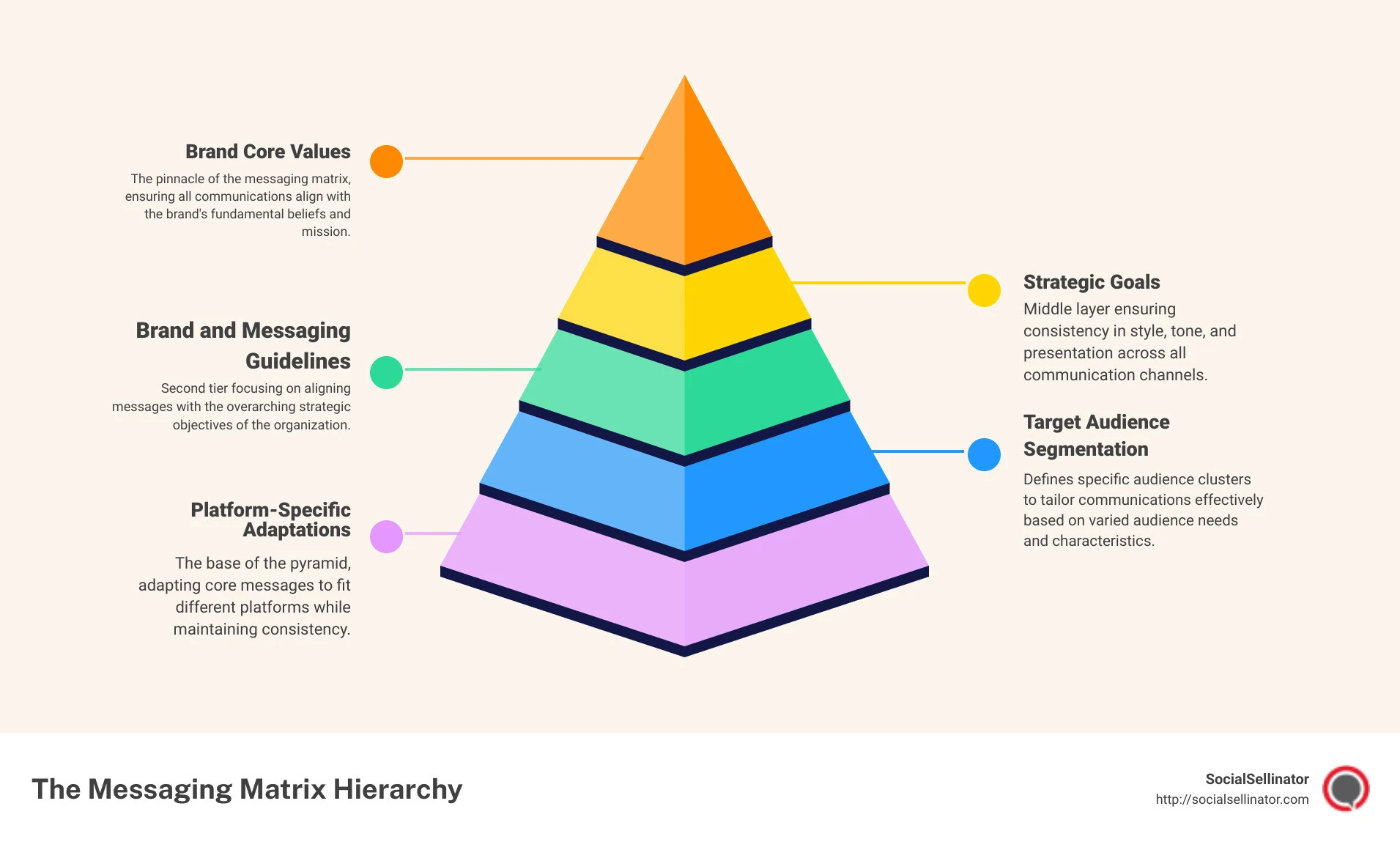Here’s something mind-blowing: social media now has over 5 billion users worldwide. The average person uses 6.7 different social networks each month. Your personal brand needs to shine in this vast digital world.
Personal branding on social media has become extremely crucial these days. The numbers tell an interesting story: half of all employers check candidates’ personal social media profiles. Hiring managers take it even further – 64% review candidates’ social network profiles when making decisions. On top of that, LinkedIn serves as the go-to platform for over 90% of recruiters searching for talent. Networking powers 85% of all job placements.
These facts inspired me to create this guide about building an authentic personal brand on social media. This step-by-step guide helps professionals advance their careers, entrepreneurs build authority, and anyone who wants to make their mark online. The right personal branding strategies will help you reach these goals.
Trust flows more naturally toward individuals than companies. This explains why 58% of consumers watch stories to find authentic content. A strong personal brand that you market confidently sets you up for success in both work and life.
Let me walk you through each step to build your personal brand on social media. We’ll cover everything from profile optimization to creating content that strikes a chord with your audience. Ready to begin?
Audit and Optimize Your Social Media Profiles
 I
I
mage Source: RecurPost
A social media audit sets the foundation of your personal branding campaign. This step gives you a clear picture of your current position and shows areas where you can improve.
Choose the right platforms for your goals
Each social media platform offers different benefits to your personal brand. Research shows platform effectiveness varies based on your industry, audience, and goals. Here’s what you should think over while picking your platforms:
- LinkedIn stands out for professional networking, expertise, and industry insights
- Instagram shines in visual storytelling and lifestyle branding
- X (formerly Twitter) helps you join industry discussions and conversations
- TikTok/YouTube excel at in-depth or visual content creation
You should become skilled at using three social media platforms that match your brand and audience instead of trying to be everywhere. This focused strategy helps maintain quality and consistency. To cite an instance, LinkedIn should be your priority if you target executives or B2B connections, while creative professionals might get better results from visual platforms.
Update bios, photos, and links
Your social profiles create digital first impressions, so they need to be detailed and polished. Brand experts emphasize that consistency plays a vital role in personal branding across platforms.
Start with a professional headshot and use it across all networks to build recognition. Make sure all bio sections contain accurate, current information that showcases your goals and expertise.
Each platform needs its own approach:
For Twitter/X: Your bio must pack meaningful information into 2800 characters. Strategic keywords can boost your profile’s search ranking. Add relevant @mentions to connect with your company and hashtags to help people find you.
For LinkedIn: Your summary should open with a powerful statement about your abilities rather than a job list. The extended character limit lets you naturally weave in industry keywords. Numbers and data points can make your achievements more impressive, as “well-chosen data can go a long way to impressing others”.
For Instagram: Set your profile to public and make those 150 characters count. Your bio should express your mission, values, and goals in an authentic voice that connects with your audience.
Check all contact details and URLs to ensure they work correctly. Broken links look unprofessional and waste opportunities to connect.
Remove outdated or irrelevant content
Look at your existing content through your current brand’s lens during the social media audit. Experts suggest removing any questionable or low-quality posts from the past to protect your online reputation.
Close or deactivate unused profiles to guide followers toward your active accounts. This makes your online presence clearer and prevents confusion. Abandoned accounts with old information can harm your personal brand.
Review your social media presence every three months to keep everything current and arranged with your personal branding goals. Look for outdated pinned posts, old seasonal content, and information that doesn’t fit your current brand position.
A detailed audit and optimization of your social profiles builds a strong base for your personal brand on social media. This upfront work to organize your digital presence rewards you with better visibility, stronger audience connections, and a unified brand image.
Define Your Personal Brand and Expertise

Image Source: Marketing Insiders Group
“Brand yourself for the career you want, not the job you have.”
— Dan Schawbel, Managing Partner of Workplace Intelligence, bestselling author and personal branding expert
Your optimized profiles set the stage to define what your personal brand represents. A strong personal brand on social media needs clarity about your professional identity and the unique value you bring.
Identify your niche and strengths
Personal branding success comes from specialization. A specific niche makes you memorable and helps you shine in crowded social media spaces. A branding expert says it best: “The more niche your expertise, the easier your rise will be”.
Start by listing your professional strengths, skills, and accomplishments. Ask yourself:
- What skills do I excel in?
- What parts of my background make my viewpoint unique?
- Where have I consistently delivered results?
- What specific problems am I good at solving?
Self-assessment can be tricky. Trusted colleagues can help. You can ask people you trust to describe you in three positive words or phrases and compare those with how you see yourself. This shows any gaps between your self-image and how others notice you.
Finding your niche takes time. It needs you to “bravely put a stake in the ground about who you are as a professional… and importantly, who you are not”. Look at areas where your expertise, passion, and market need overlap. A narrow focus helps you connect with the right audience and makes you more valuable in your specialized field.
Craft a personal brand statement
Your personal brand statement forms the base of your online identity. It clearly tells who you are, what you do, and how you provide unique value. A good statement runs 4-6 sentences and should capture your expertise, target audience, and what sets you apart.
Your unique value proposition (UVP) comes first – the special mix of skills, experiences, and viewpoints that only you have. This guides all your content creation and social media interactions.
Your statement should:
- Start with your area of expertise
- Show how your expertise solves specific problems
- Tell parts of your professional trip that shaped your approach
- End by highlighting what makes you different
Skip technical jargon and industry speak – your statement should be clear to different audiences. Numbers add credibility without bragging (e.g., “managed a portfolio worth $3 million, delivering consistent 15% annual returns”).
Match your content with your values
Social media needs your content to match your stated values. Your brand’s core values guide your mission and shape others’ perception of you. These values create a steady voice that helps you decide what to post and share.
Note that a personal brand goes beyond your job title or LinkedIn headline – “it’s the way you’re experienced by other people”. It covers your energy, viewpoint, and problem-solving style. Your personal brand works best when purpose and passion meet real-life results.
List key values that fit your mission and professional goals. Whether you focus on state-of-the-art solutions, integrity, teamwork, or continuous learning, these values should show in your content and interactions. A consistent approach builds trust with your audience and makes your personal brand stronger over time.
A clear niche, compelling brand statement, and strong core values create a solid foundation for your social media presence – one that truly shows who you are and the unique value you offer your audience.
Create and Share Valuable Content Consistently
“Everything you post on social media impacts your brand. How do you want to be known?”
— Lisa Horn, Public relations expert, known as The Publicity Girl
Your social media presence thrives on valuable content once you’ve defined your personal brand. The content you create acts as the life-blood that attracts followers, shows your expertise, and ends up building your online reputation.
Decide on content types and formats
Your target audience should resonate with content that reflects your expertise. Recent research shows 86% of businesses now use video as a marketing tool because it stimulates revenue growth 49% faster. Personal branding sees similar effects.
These content formats work well:
- Blog posts/articles – Show your in-depth expertise
- Short-form videos – Get the highest engagement on most platforms with 81% of viewers preferring them
- Infographics – Make complex information simple and shareable
- Stories/Reels – Give authentic peeks into your daily life
Each platform favors different formats. The secret lies in matching your content with your personal brand goals. Social media experts point out: “When you’re able to speak to what your audience is interested in and it’s leading with value, it’s matched against your expertise and your passions—that’s when you really create a strong community”.
Set a realistic posting schedule
Building your personal brand needs consistency more than frequency. Experts suggest creating a “minimum viable calendar” – the least amount of content you know you can produce regularly. You’ll maintain long-term consistency better by setting realistic goals, whether that means posting weekly or monthly.
Different platforms need different approaches:
- LinkedIn: Begin with 2 quality posts weekly, then build to 3-5 posts as you grow
- Instagram: Share 1-2 posts daily, or 3-5 posts weekly
- X (Twitter): Make 2-3 posts daily
- TikTok: Post 3-5 times weekly
Notwithstanding that, these serve as general guidelines. “There’s no magic number for how often to post. It depends on your audience, network-specific norms and internal bandwidth”. Your audience should know when to expect your content rather than seeing sporadic posts.
Use hashtags and trends strategically
Hashtags let users find information through keywords or phrases. They add context to your posts, help your brand get discovered, and connect communities when used right.
Best results come from:
- Short and memorable hashtags
- 1-3 hashtags on LinkedIn and Twitter/X
- Up to 10-11 relevant hashtags for Instagram Stories or Reels
- Specific, relevant hashtags instead of broad ones
About 15% of consumers prefer social media searches over search engines, while 31% use them to find answers. Tools like RiteTag, Keyhole, and Postly.ai help find relevant hashtags for your content.
Repurpose high-performing content
Budget-friendly content repurposing saves time. Venngage’s social media traffic grew 300% on Twitter, 200% on LinkedIn, and 150% on Pinterest after using this approach.
Smart ways to repurpose include:
- Turn blog posts into carousel posts for LinkedIn or Instagram
- Create infographic sections from data-heavy content
- Break webinars into short video clips or blog posts
- Make shareable graphics from quotes
Look at metrics like engagement, reach, or conversions to find your best content. Then adapt it for different platforms while keeping your core message intact. This helps your content last longer and reach new audience segments.
Your personal brand grows stronger on social media as you create valuable content consistently across platforms. This builds visibility, credibility, and deeper connections with your audience.
Engage Authentically With Your Audience
Building your personal brand on social media requires more than just great content. Your authentic connection with the audience matters just as much. The digital world now values authenticity above all else, and users can spot the difference between real interactions and fake ones quickly.
Respond to comments and messages
Quick responses to audience interactions show that you value their input and care about your community. Studies prove that answering all comments and direct messages builds trust and demonstrates your commitment to the audience. A thoughtful response to comments remains one of the most overlooked yet quickest ways to boost social media engagement.
Tips for handling audience interactions:
- Thank people for positive feedback to build stronger relationships
- Take negative comments as chances to show your dedication to customer satisfaction
- Your response should come within 24 hours, though 48 hours works too
Expert responses help establish your authority in the field. A single well-crafted comment can drive as many profile visits as a post that took ten times longer to create.
Join and contribute to relevant groups
Groups on social media are a great way to get networking opportunities, share knowledge, and track industry trends. Your participation in these communities helps you collect practical insights to stay competitive and relevant.
Being active in groups boosts your personal brand through:
- New opportunities for social media partnerships
- Direct connections with your target audience
- Better networking with professionals in your field
Quality beats quantity in group participation. Share your expertise, ask engaging questions, and add value without pushing self-promotion too hard.
Use polls, questions, and live sessions
Interactive content turns passive followers into active participants. Asking for opinions starts conversations instead of one-way communication. This two-way interaction promotes real connections that strengthen your personal brand.
Live Q&A sessions create unique bonds with your audience. These sessions let you answer questions, share insights, and have open discussions. Keep your livestream tone professional but friendly, and use people’s names to build meaningful connections.
Polls and surveys work well to satisfy curiosity and get valuable feedback. Data shows interactive content doubles conversion rates compared to passive content, and posts with polls see higher engagement across platforms. Live polling helps understand audience opinions and can guide your content direction based on real-time feedback.
These engagement strategies help build trust, deepen connections, and establish your voice as an authority. Your personal brand on social media grows stronger through authentic interaction with your audience.
Maintain a Consistent Voice and Visual Identity

Image Source: SocialSellinator
A consistent personal brand on social media builds success. Your brand definition and content creation should lead to a unified voice and visual identity on every platform.
Develop a brand style guide
Think of your personal brand style guide as a rulebook that will give a consistent look to everything you create. This guide has three main sections: about you, writing guidelines, and visual elements. A complete guide covers your brand story, logo usage rules, color palette, typography, and communication style. These elements work together to build recognition and trust.
To create your style guide:
- List your core personality traits and values
- Set your writing voice and tone variations
- Choose your visual elements (colors, fonts, imagery)
- Show examples of what works and what doesn’t
Your brand voice shows what you value and believe. Ask yourself: What principles guide your decisions? Why did you start? Which problems do you want to solve? These answers are the foundations of an authentic voice that strikes a chord with your audience.
Adapt tone for different platforms
Your core brand voice should stay steady, but your tone needs to match each platform and situation. One expert puts it well: “Brand voice is what you say and brand tone is how you say it”. Your tone moves naturally between organic posts and customer responses.
Build a tone chart to show how your voice fits different channels while keeping your identity. To cite an instance:
- LinkedIn: Professional and insightful, not salesy
- TikTok: Fun and casual, not corporate
- Twitter/X: Sharp and brief, not wordy
This flexibility helps your message connect while keeping your personality clear.
Use templates and design tools
Templates make visual consistency simple. They support your professional identity and help you look polished across platforms. Tools like Canva, Adobe Express, and Looka let you create a uniform look even without design expertise.
Load your brand kit in these platforms with your colors, fonts, and logo elements. Your designs will stay on-brand without any confusion. Create custom templates for common content types—social posts, presentations, email headers—and save them for quick use.
Note that consistency builds more than looks – it creates the credibility and trust your personal brand needs. A well-organized brand package helps you create better content faster and deepens your unique identity.
Leverage Tools, Influencers, and Learning Resources
Your personal branding trip needs the right resources to speed up. New technology creates opportunities to boost your social media presence without much effort.
Use AI tools for content and analytics
AI technology has revolutionized personal branding by making time-consuming tasks easier. Your personal brand management has become substantially simpler through smart AI tools. Tools like Canva AI and Midjourney help create professional visuals. Platforms like Sprout, Buffer, and Hootsuite use AI to schedule posts and analyze engagement metrics. AI can help you in all phases of your branding process:
- Content creation: Use ChatGPT or Perplexity to research topics and outline articles
- Analytics: LinkedIn Analytics tracks profile views and audience demographics
- SEO optimization: Tools like Ahrefs identify trending keywords to increase your visibility
Follow and learn from micro-influencers
Micro-influencers (those with 10,000-100,000 followers) are a great way to get lessons for personal branding. They generate 60% more engagement than larger influencers, with average engagement rates of 3.86% versus just 1.21% for mega-influencers. Their success comes from authenticity – especially when you have younger audiences like Gen Z.
Ways to utilize micro-influencer strategies:
- Study how they communicate personally with followers
- Observe their authentic content approach
- Use tools like Meltwater or BuzzSumo to identify relevant influencers in your niche
Think over a social media certification
The right training can raise your personal branding skills substantially. Detailed certification programs teach everything from developing your unique value proposition to creating compelling content and building your online presence. These credentials show your expertise and might open new career opportunities. Popular programs from platforms like LinkedIn Learning or specialized organizations like Social Media College can help you succeed.
Conclusion
A strong personal brand on social media demands dedication, consistency, and strategic planning. This guide explores several critical aspects that will substantially raise your online presence.
Your experience starts with a complete audit of your existing profiles. You should then optimize your chosen platforms thoughtfully. Quality beats quantity when picking networks. Focus on three platforms where your target audience spends time instead of spreading yourself thin.
Your unique expertise serves as the life-blood of authentic personal branding. A clear niche and personal brand statement will help you connect with your ideal audience easily. Your content’s arrangement with core values will give a sustainable long-term path to genuine connections.
Content creation can overwhelm you at first. Starting with a realistic posting schedule helps maintain consistency without burnout. You can maximize reach while minimizing effort by using hashtags, trends, and content repurposing strategically.
Without doubt, authentic engagement turns followers into genuine connections. Quick responses to comments, participation in relevant communities, and interactive content build trust with your audience naturally.
People recognize your brand instantly through visual and voice consistency across platforms. Even without professional design skills, a simple style guide with templates and design tools makes this process manageable.
You can speed up growth and be proactive about trends by using AI tools, micro-influencer strategies, and professional certifications.
Personal branding on social media needs time. The professional opportunities and connections make every effort count. Keep your approach small, consistent, and adaptable based on audience feedback. Above all, stay authentic – people connect with real personalities, not perfect profiles.
The digital world will definitely keep changing. These fundamental principles of personal branding will help build a lasting online presence that creates new opportunities and meaningful connections.
Key Takeaways
Building a strong personal brand on social media requires strategic planning, authentic engagement, and consistent execution across your chosen platforms.
• Focus on 3 platforms maximum – Master LinkedIn, Instagram, and one other network that aligns with your goals rather than spreading yourself thin across all channels.
• Define your niche clearly – The more specialized your expertise, the easier it becomes to stand out and attract your ideal audience in crowded social spaces.
• Consistency beats frequency – Create a realistic posting schedule you can maintain long-term rather than posting sporadically or burning out with daily content.
• Engage authentically with your audience – Respond to comments within 24-48 hours and participate in relevant groups to build genuine connections and trust.
• Maintain visual and voice consistency – Develop a simple brand style guide with templates to ensure your content is instantly recognizable across all platforms.
Remember that personal branding is a marathon, not a sprint. Start with these fundamentals, stay authentic to your values, and adjust your strategy based on audience feedback. The professional opportunities and meaningful connections you’ll build make the consistent effort worthwhile.
FAQs
Q1. What are the key steps to building a personal brand on social media?
The key steps include auditing and optimizing your profiles, defining your niche and expertise, creating valuable content consistently, engaging authentically with your audience, maintaining a consistent voice and visual identity, and leveraging tools and resources for growth.
Q2. How often should I post on social media to build my personal brand?
Consistency is more important than frequency. Start with a realistic schedule you can maintain, such as 2-3 quality posts per week on LinkedIn, 1-2 daily posts on Instagram, or 2-3 daily tweets on X (Twitter). Adjust based on your capacity and audience engagement.
Q3. How can I make my personal brand stand out on social media?
To stand out, focus on a specific niche, craft a unique personal brand statement, create valuable content that aligns with your expertise, engage authentically with your audience, and maintain a consistent visual and voice identity across platforms.
Q4. What role does authenticity play in personal branding on social media?
Authenticity is crucial for building trust and genuine connections. It involves aligning your content with your core values, engaging sincerely with your audience, and consistently presenting your true self across all interactions and platforms.
Q5. How can I measure the success of my personal brand on social media?
Track metrics such as engagement rates, follower growth, profile views, and content reach. Use platform-specific analytics tools and consider the quality of connections and opportunities arising from your branding efforts. Regularly seek feedback from your audience to gage your brand’s impact and make necessary adjustments.
About The Author
Get A Free 1 Hour Consultation
I can help you fix your digital marketing strategy that powers your business growth.
No strings attached. No commitments required. No sales pitch from my side about our services. I will give you a patient hearing, understand your business, understand your business growth challenge and suggest various growth strategies you can implement for your business. I will talk about my service offerings, only if you want me to. Not otherwise.


